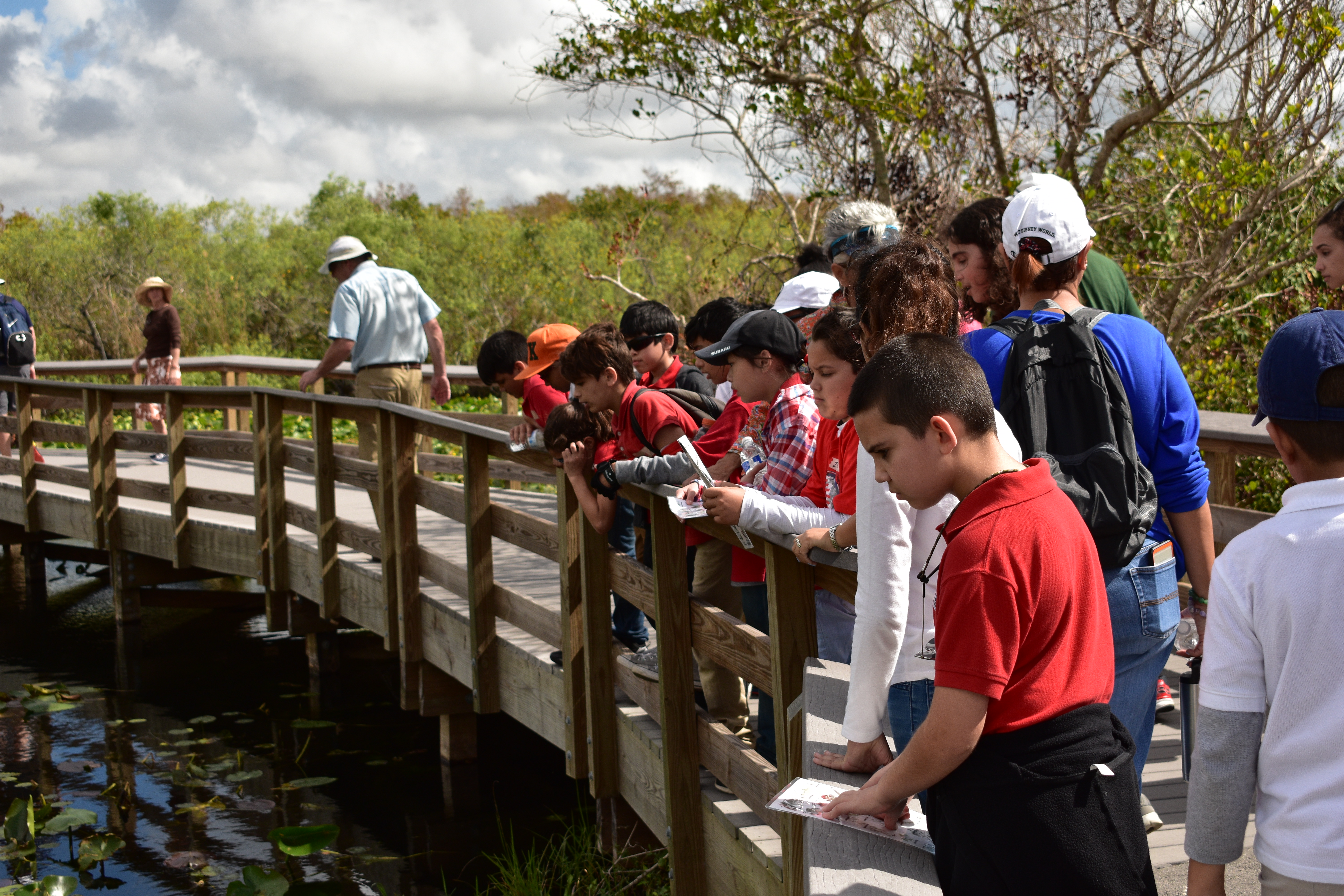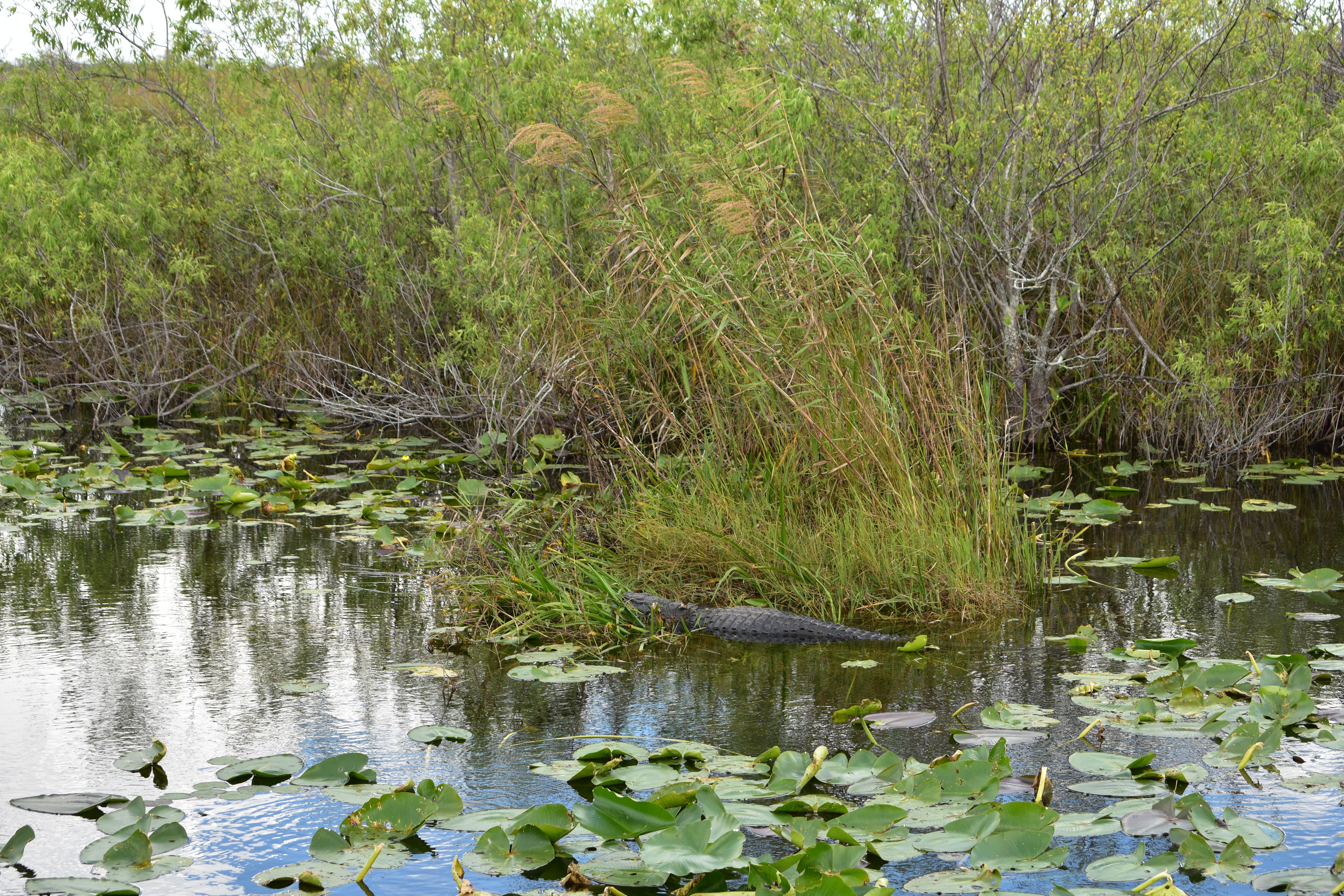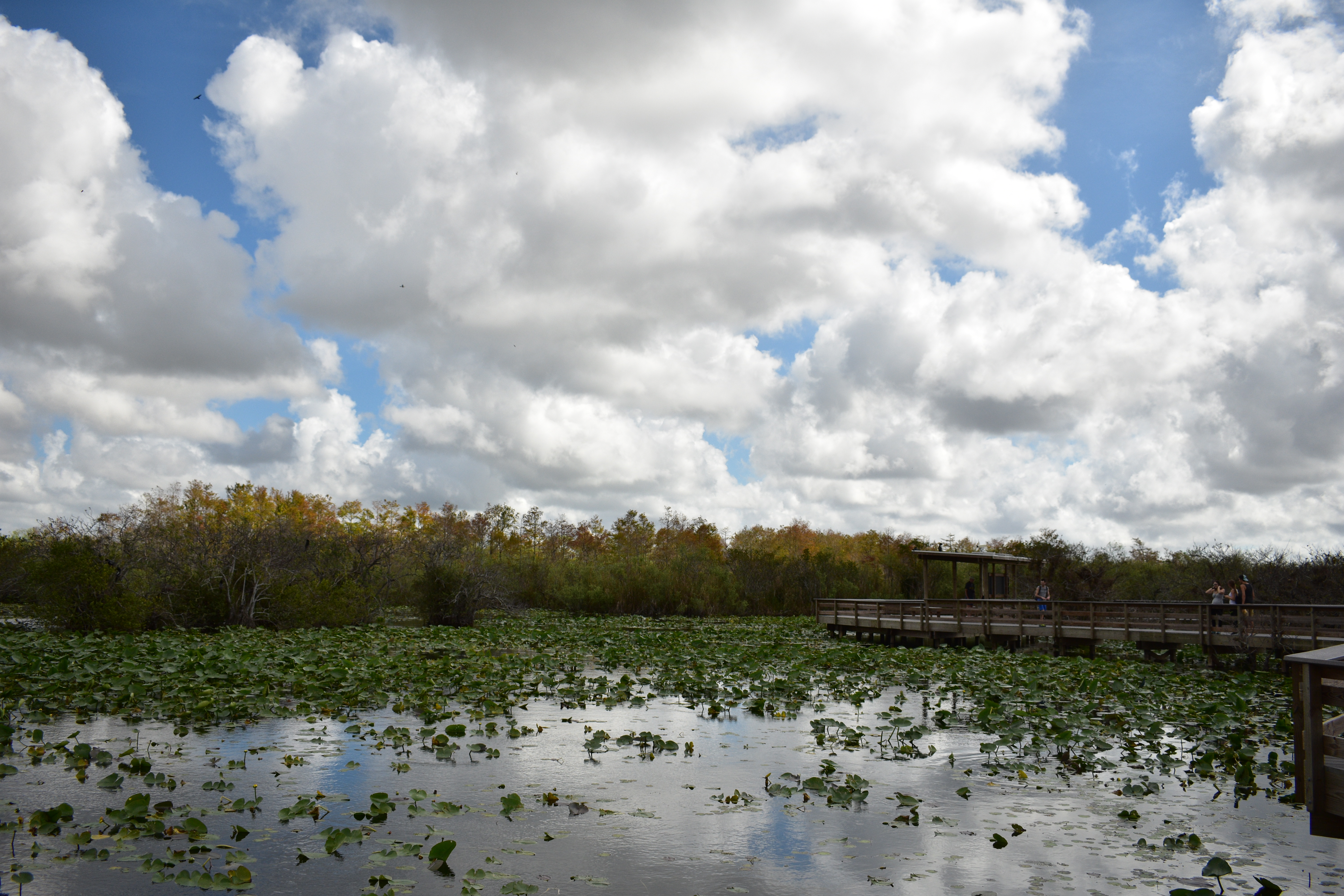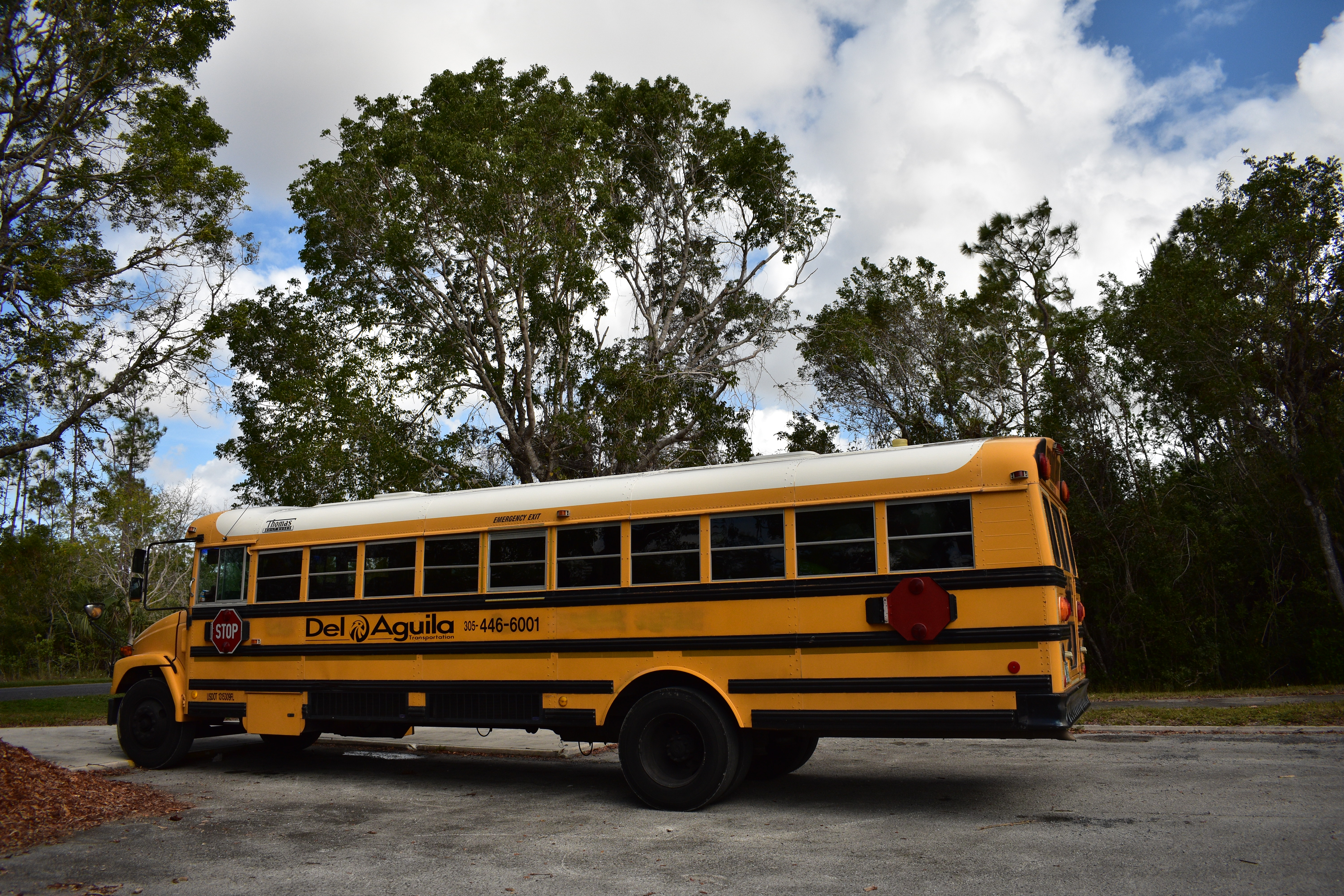
Everglades works on diversity dilemma
FLORIDA CITY, Fla. — There is a slight buzz hanging in the dirk baked, humid South Florida air. There are no houses in sight, no buildings period. Mangroves tangle into each other, sawgrass sits soaked in water.
A group of students, uniform in Miami Shores Elementary t-shirts and the remnants of their lunch crusted on their lips, blend into the nature. It is not a common sight.
Across the United States, the National Park Service has struggled to attract diverse, young visitors, especially as demographics shift, an issue that has influenced the understanding of the parks and preservation efforts.
“I want to expose them to what the Everglades are all about,” said Deborah Hesler, a fifth grade teacher from Miami Shores. “We try to teach them what nature gives us and what we can give back.”
For 20 years, Hesler has been taking 26 fifth grade students to a three-day camp at the Everglades’ Hidden Lake Education Center, a free, five-tent site used as an educational hub for South Florida’s fifth and sixth grade students in hopes of connecting them to nature.
“Some may not get that experience otherwise. So many students come back and tell me it was the best thing about their year,” Hesler said. “They want to come back and bring their families.”
The Hidden Lake Camp Program is designed to eliminate barriers for students so that anyone can come to the park. In Hesler’s case, the Miami Shores’ parent-teacher association pays for the majority of the trip, picking up transportation fees and food, which can amount to more than $1,000. Students, on the other hand, only have to pay $20. After writing an essay, an interview and a swim test, 26 lucky students are chosen to escape to Everglades National Park, most of them for the first time.
“If I could, I’d take every student,” Hesler said. “We try to afford them whatever we can.”
Hesler is one of the many dedicated to getting minority groups and students into national parks to help alleviate the national trend.
In 2016, the parks set a record for recreation visits, attracting 331 million people, but the majority were over 50 and white. The most recent survey from the park service on visitation, published in 2011, found that nationally 22 percent of visitors were minorities despite the national census numbers for minorities being 37 percent.
The U.S. Census Bureau projects the United States will no longer have a majority white population within the next 25 years. Demographic change will affect how parks are visited and, in turn, how the park system and environment is valued.
“Disadvantaged communities have never thought of national parks as their parks, they think of them for other people, for tourists,” said Jacqueline Crucet, the National Parks Conservation Association (NPCA) Suncoast Senior Program Manager, in a phone interview.
Crucet, who focuses on community engagement and youth advocacy, works to get students from disenfranchised communities into the parks. Though parks have traditionally represented a sense of individuality and adventure, they may not have the same meaning for all people. Historically, the parks, like other governmental amenities, have been viewed as a “white” activity.
Programs and historical anecdotes are tailored to the culture and history of the majority, and the expense of paying for the park and getting to the park proves difficult, especially because often lower-income groups are also minority groups.
“With an at-risk community, there are underprivileged children and you have a lot of poverty,” Crucet said. “They can be fearful when they see people in badges.”
The unfamiliarity is a major disconnect. In NPS’s visitation survey, minority groups were three times as likely to perceive national park units as unsafe, unpleasant and providing poor service — and these responses were from non-visitors, suggesting perceptions have been cemented into reality.
Simply knowing basic information about national parks is another divide. The main reason respondents claimed not visiting a national park more often was that they “just don’t know that much about national park system units.”
The survey also revealed that Spanish-speaking visitors and non-visitors alike had a more negative view than English-speaking Hispanics. When interviews were conducted in Spanish, interviewees had up to a 30 percent more negative view of parks, a difference that dispels more than just language nuances.
In the survey’s report, NPS suggests the difference could be attributed to “social, economic and/or cultural variation” between the groups of Hispanic respondents and that those who only spoke Spanish may include recent immigrants with less understanding of national parks and government employees.
| Students from Ben Gamla Charter School explore the Anhinga Trail in Everglades National Park. |  |
In Miami-Dade County, Fla. where the foreign born population is 52.2 percent and the Hispanic population is 67.7 percent — according to latest Census Bureau records in July 2016 — this is particularly important.
The Everglades, one of Miami-Dade County’s two national parks, attracts about one million visitors annually. More than 80 percent of visitors are aged 41 and older, according to the most recent visitor survey card in March 2016.
Furthermore, the park’s latest survey on visitor ethnicity/race revealed 98 percent of visitors self-identified as white, with only seven percent self-identifying as Hispanic.
Increasing awareness about South Florida’s parks is not only to instill ownership in minority groups, but also for the benefit of conservation efforts.
“Restoring the everglades is not just for the eco-experience, but also for the health and well-being of communities,” said Cara Capp, NPCA’s Everglades Restoration Program manager and the national co-chair of the Everglades Coalition, in a phone interview.
Eighty-percent of the historic water flow to the Everglades has been lost due to development and eight million people rely on the Everglades for their daily water. Efforts to protect this environment is only elevated when you have had a personal experience with the park, Capp said.
NPS is working on addressing diversity, even from the inside. In 2013, NPS created the Office of Relevancy, Diversity and Inclusion and the park system has committed itself to make diversity an important value in attraction, employees, volunteers and management — though they do not routinely track the demographics of its parks.
Among budget cuts, the parks are still trying to partner with organizations to bring students into the park, such as South Florida National Parks Trust which helps 10,000 students visit a park in South Florida each year. Programming and historical interpretation is also a main priority to acculturate minority groups and younger generations into the park system.
“Once you understand that these are parks that tell your stories, they are parks that have a lot of opportunities to have fun and reconnect with things you didn’t even know you needed to connect with, it’s a whole different level,” Crucet said. “You don’t hear the silence in the bustling cities, but when you get in the national park you feel the space, you feel the silence, and you are able to connect with the space. It’s a human experience that is hard to get at in a bustling city.”
 |
The American alligator is one of the most vital, and iconic, species in the Everglades. |
It is not just about increasing awareness, but also making experiences that are relevant to minority groups, especially to ensure the preservation of historical sites and natural environments.
“The whole idea is to preserve and protect for future generations,” said Kirk Singer, an interpretive ranger for the Everglades. “If we could get people to get out of their comfort zone, that would be ideal.”
The more people have personal experiences with the park, the better off the NPS and the outdoor industry is as well.
“If you don’t know that these things are there, you won’t miss them,” Crucet said. “But once you know and understand their relevance to your life, to your quality of life, and you see their environmental, economic and intrinsic values, then you have enough information to become an effective advocate so not only you can enjoy them, but you can help future generations.”



Comments are Closed